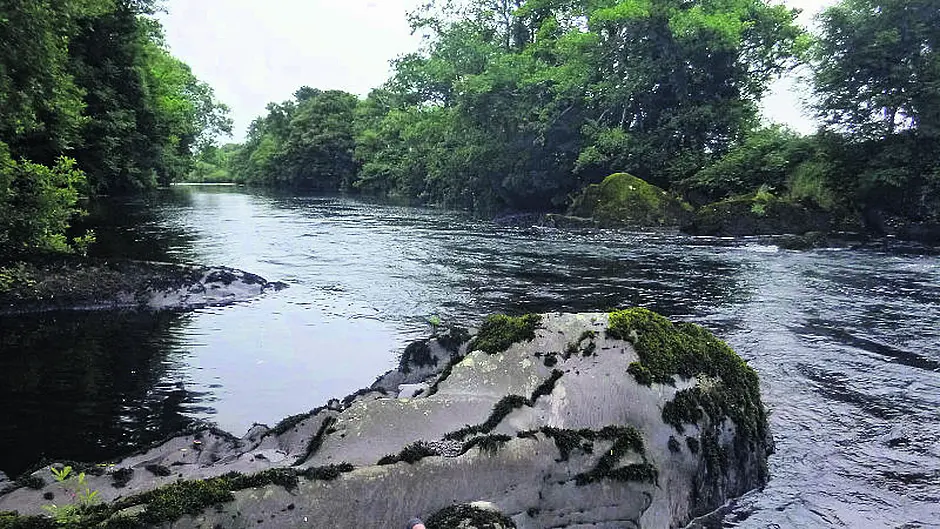THE level of ammonia coursing through the river Ilen in Skibbereen recently was ‘literally off the charts,’ according to Social Democrat Cllr Isobel Towse, and despite this, Uisce Éireann did not report the issue to the Council for over a week.
Uisce Éireann (UÉ) confirmed to Cllr Towse that ‘the ammonia levels detected were out of range on our testing instrument, which reads up to 1.3mg/l. Therefore, the ammonia levels were far in excess of this’.
A spokesperson for UE explained to her that the water treatment plant at Ballyhilty is designed to ‘shut off when the ammonia level exceeds 0.3mg/l for a period greater than 15 minutes. In a statement sent to Cllr Towse, UÉ said the cause was unknown, but unlikely to come from agricultural runoff.
‘In our opinion, it wouldn’t have been from land spreading of slurry, as there was no heavy rainfall and the results were far in excess of what was ever experienced before in terms of an ammonia shutdowns on previous occasions.’
Uisce Éireann also stated: ‘As we are plant operations only, we do not have the capacity to investigate the root cause of the incident.’
Cork County Council confirmed to The Southern Star that they were not made aware of the issue until the 21st March, when it had happened on the 13th.
‘We understand that high levels of ammonia were recorded by Uisce Éireann in the water abstraction at Ballyhilty water treatment plant on the 13th of March. The environment department of Cork County Council were not made aware of this until the 21st of March. We were not asked by UE to investigate potential catchment sources.’
Meanwhile, Uisce Éireann said that in their opinion, it ‘was a large volume spillage’ as it took place over 12 hours.
They also shut down the Ballyhilty water treatment plant to ensure drinking water quality was not compromised, and imposed a water restriction from 7pm on Thursday March 13th until 9am the next day in order to conserve supply, because the storage capacity of reservoirs in the locality was critically low.
Cllr Towse observed that a reading of 0.3mg/l over a period of 15 minutes shuts off the plant, which it did immediately. But as the pollution event lasted over 12 hours, the level of ammonia was far in excess of four times the amount that automatically shuts down the plant, she said.
‘Once I received this data from Uisce Éireann showing how serious an incident it was, I reported it to the Council for investigation,’ said Cllr Towse.
‘This,’ she noted, ‘was days after the actual pollution event occurred and I was shocked to find that Uisce Éireann hadn’t reported it to the Council themselves as soon as they discovered the incident.
‘How is the Council expected to accurately investigate pollution and find the source days later when it has largely all washed away?’ she asked.
‘Now, we have no idea what the source of this colossal pollution event was and I fear we may never know,’ said the councillor who complained: ‘It is absolutely ridiculous that there wasn’t a scrap of communication between Uisce Éireann and the Council regarding this event, which was so time sensitive.’
Cllr Towse complained that Uisce Éireann ‘seems to believe their responsibility ends with the water treatment plant itself, and that reporting such a major pollution event to the Council isn’t their responsibility.
‘Their response to me very much put that reporting responsibility on the public. They are a state agency, reporting major pollution events to the Council as they happen should be integral to their operations.’
The councillor noted UE’s comment that slurry spreading was not the likely cause as there was no heavy rainfall at the time, and the levels far exceeded previous shutdowns from ammonia at the plant.
‘Whether this was caused by industry, sewage, or another possible cause is completely unclear without investigation. I just hope Uisce Eireann can get their act together in future and as soon as they are aware of pollution, they will simply take the two minutes it took me to report it to the Council.’
The Environmental Protection Agent (EPA) said that Uisce Éireann is required to report exceedances ‘detected in the drinking water, post treatment, as they occur’.
They went on that no such exceedances had been reported in the Skibbereen water supply for 2023, 2024, or 2025.
‘Uisce Éireann is obliged to report any exceedances of this nature. Uisce Éireann reports the full years monitoring data for treated water at the end of the calendar year for EPA assessment.’









